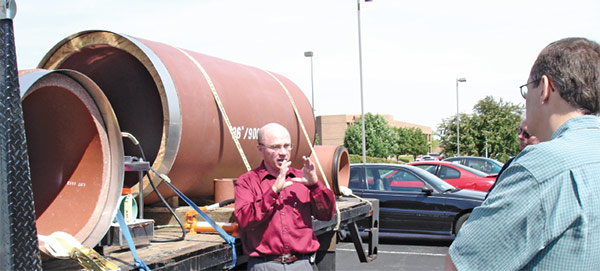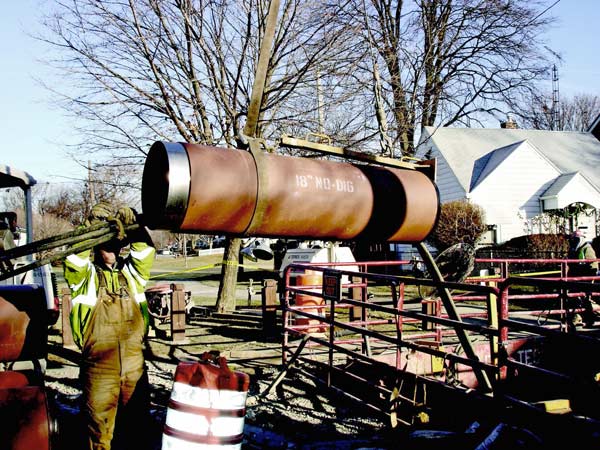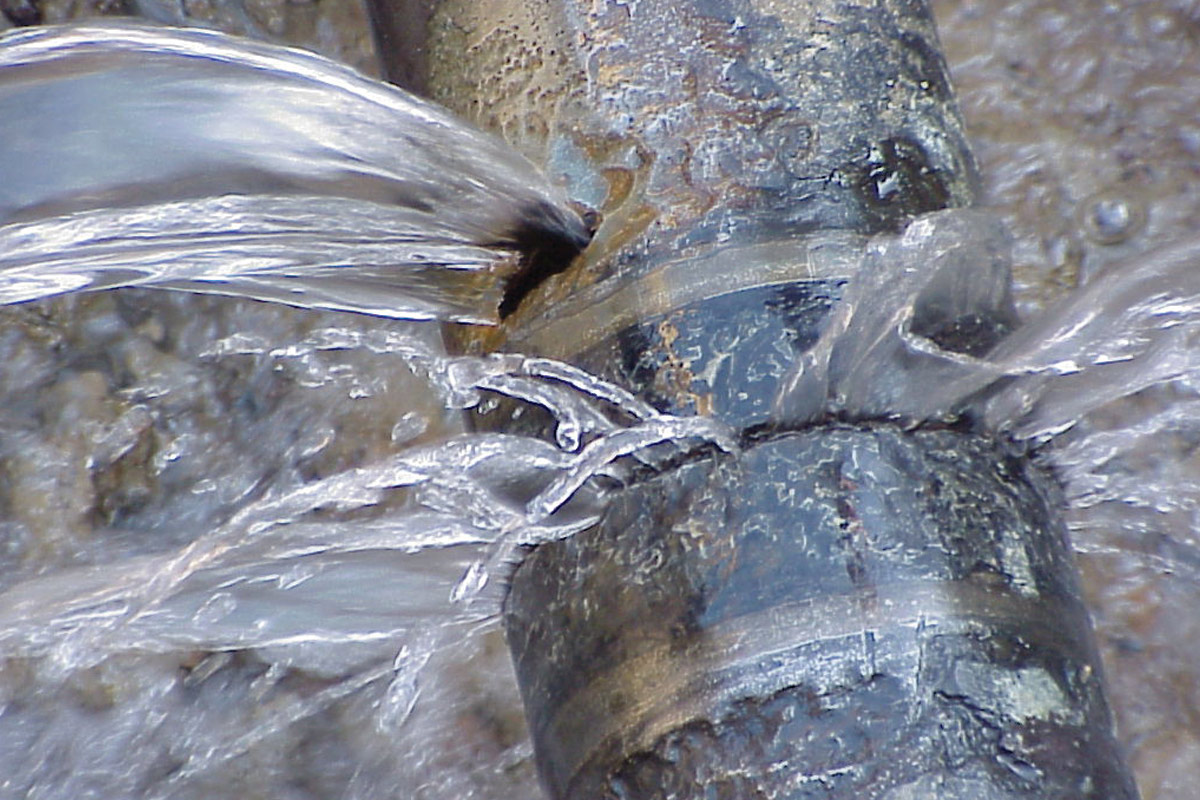On A Mission
They say if it’s not broke, don’t fix it. In the case of clay pipe, it’s not easily broken, and often doesn’t need to be fixed. But that phrase is also a testament to the longevity of clay pipe.
According to the National Clay Pipe Institute (NCPI), many U.S. cities have vitrified clay pipe (VCP) sewer lines that are more than 100 years old and still in service today. It is one of the main benefits that clay pipe manufacturers, such as Mission Clay Products and other industry leaders, have tried to push for more than 60 years.
Today, it’s no secret the field of underground infrastructure has seen a growing increase in the use of plastic pipe, such as PVC and HDPE in trenchless applications. Ductile iron pipe also continues to be another leading choice for contractors as it recently earned the “SMaRT” Sustainable Product Certification for life cycle sustainability.
Ultimately, the debate on the advantages and disadvantages of different pipe materials carries on. In particular, clay pipe manufacturers have found a major market in pilot-tube microtunneling over the last 20 years. Mission Clay Products LLC has been at the forefront of clay pipe manufacturing since the early 1950s. Since then, the company has also been proactive in educating the industry on the advantages of clay pipe, working closely with organizations like NCPI to promote the benefits to owners and contractors. That initiative and drive for success is rooted in the company’s history, which can be traced back to the late 1930s.
Mission Clay was born out of some unfortunate circumstances for founder Ben Garrett. According to his son Walt Garrett, former Mission Clay CEO and second generation owner, Ben was determined to make his mark in the pipe business. The story goes, that in the 1930s and 1940s, Ben Garrett was an underground pipe contractor working in California,doing mainly plumbing work. He worked primarily with cast iron pipe materials because joints for cast iron pipe were made from lead and oakum and performed much better than the concrete joints used on clay pipe at the time. As Walt Garrett noted, his father was reasonably successful in the field despite operating his business through the peak years of the Great Depression.
After World War II, a housing boom in California caused a shortage in cast iron pipe, and clay pipe eventually emerged as the new pipe of choice for contractors. It wasn’t long before the high demand of clay pipe caused those contractors to experience a shortage in clay pipe. When manufacturers couldn’t keep up, they began to sell only to a list of customers who had bought clay pipe before the war. Ben Garrett was not on that list and was essentially denied the ability to buy the product.
He would not be deterred, and soon found a few other people in the same situation and they decided to partner and form Atlas Sewer Pipe in the late 1940s. Garrett and his new business partners bought an old roof tile factory and hired workers from other clay pipe manufacturers and began to manufacture their own product. During that time, he continued to operate as a contractor, using the clay pipe his company was manufacturing.
“[My father] was buying pipe from the company that he was mostly part owner of,” said Walt Garrett. “That went on for a few years and the partnership eventually ran into problems, so they decided to split the partnership up. They agreed on a price, flipped a coin and whoever won the coin toss could choose whether he wanted to buy or sell [his share] at the price agreed upon. My father lost the coin toss and his partners bought him out.”
Mission Clay: A Joint Venture
By 1950, about a year after being bought out of Atlas Sewer Pipe, Ben Garrett found success on the other side of the coin. Now having had a taste for the business, he thought he could do it himself and moved to Orange County, Calif., where he purchased another factory, similarly converting it into a plant for manufacturing clay pipe and thus, Mission Clay Products was born.
Ben Garrett ran that factory for about 20 years, but only a few years went by before he and other manufacturers saw a major shift in the industry with regards to joint issues in clay pipe. At the time, many cities’ sewer systems were a combined sewer and storm sewer system — meaning when it rained, storm water would flow into the pipe and mix with sewer water. At the same time, municipalities began treating their waste at treatment plants and as secondary and tertiary treatment was introduced, the groundwater flowing into the pipe became problematic for the treatment plants.
“There were problems being faced by jurisdictions with excess water, especially during high water tables or rain,” Walt Garrett said. “So the industry focus was to come up with better joints and the 1950s was really a time of [improved] joint design.”
For Mission Clay, Ben Garrett’s answer was Band-Seal, a rubber coupling with stainless steel clamps. The Band-Seal joint is still one of the three primary types of joints used on clay pipe today, along with a type that is a polyurethane-based joint and another that used a polyester joint with a rubber O-ring.
“The industry really responded to the need for these joints, however, there were millions of feet of pipe put in the ground in the 1930s, 1940s, 1950s, and a little bit into the 1960s, that weren’t put together using those joints,” Garret said.
Getting in the Trenches
By 1980, Mission Clay was owned and operated by Ben Garrett’s two sons, Owen and Walt. At the same time, microtunneling was becoming popular in Germany and Japan. When Owen and Walt Garrett attended a vitrified clay pipe conference that year, they learned of contractors in Germany and Japan using clay pipe in microtunneling. The company spent the next several years evaluating the opportunities in the United States for microtunneling, including the development of NO-DIG pipe, Mission Clay’s brand of clay jacking pipe for microtunneling applications. By 1990, Mission was ready to take on trenchless.
“The first and best market for us was in Houston, where they were under mandates to fix their system without tearing everything up, and that’s where tunneling helps,” Walt Garrett said.
That first project in Houston was for a slurry microtunnel using an auger system. Since the early 1990s, 32 U.S. states have installed Mission Clay’s NO-DIG pipe in addition to installations in Canada and South America. The pipe was also used in a project in Logan, Utah, that was the first pilot-tube microtunneling project in the state.
“What’s important is that we developed the [No-Dig] pipe for slurry microtunneling, but in the mid-1990s, pilot-tube microtunneling was introduced,” said David Gill, sales engineer for Mission Clay Products. “Clay pipe has now become the dominant pipe used in pilot-tube microtunneling. Today, we probably have close to 30 pilot-tube projects we are involved with to every one slurry project.”
Mission Clay also manufactured 8-, 10- , 12- and 15-in. NO-DIG pipe for sanitary sewer lines in Cape Girardeau, Mo. In five phases of the project, more than 40,000 total ft was installed using pilot-tube microtunneling.
“These projects were all designed as conventional, open-cut construction, however, the successful bidder changed the installation to the pilot-tube method at a cost savings of over $2 million,” Gill added. “Somewhere in the late 1990s, early 2000s, pilot-tube installations became very popular in the United States. The reasons for that are the benefits of pilot-tube, which include avoiding traffic and utilities, and its use in deep applications.”

The Clay Advantage
In addition to his charge at Mission Clay, Gill is also actively involved in educating the industry on the advantages of vitrified clay pipe. He spends much of his time on the road, traveling to different cities, along with NCPI president Jeff Boschert, giving presentations on the benefits of clay pipe to contractors, engineers and municipalities.
Boschert and Gill said they are especially well received when they are able to bring pipe with them to an engineer’s office, as engineers and maintenance personnel frequently find modern clay pipe to be a much different product than expected
“We like to present on the pipe and case studies,” Gill said. “We like to highlight the different trenchless installation methods and the modern manufacturing process of clay pipe for that application. Probably 95 percent of what we promote is on the trenchless methods of slurry microtunneling, pilot-tube microtunneling, static pipe bursting and sliplining. We sell the technology in order to sell the pipe.”
As many in the clay pipe field would probably agree, the main benefit of vitrified clay pipe is longevity. According to NCPI, many cities in the United States still have active clay pipe sewer lines that are more than 100 years old, as it is the only sewer pipe material for which the U.S. Army Corps of Engineers assumes a 100-year life.
“Clay pipe is very chemically resistant,” Gill said. “As a ceramic, its properties do not change over time. No other pipe material is as chemically or abrasion resistant.”
He said in addition to the development of the factory-applied compression joint, one of the big changes in the area of clay pipe manufacturing has simply been in the types of materials that go into the pipe and way it is manufactured. While old clay pipes were fired with a stream press, today’s use a hydraulic press, eliminating laminations within the body. The pipe also includes a blend of four or five different types of clay and shale that have been tested and researched by geologists.
That manufacturing process plays into another advantage — the strength of clay. Vitrified clay pipe has tremendous compressive strength, and therefore is ideal in buried conditions. According to Boschert, clay pipe has an average compressive strength of 18,000 psi, which is necessary to stand up to the considerable jacking force of installation.
“With the evolution of the pilot-tube method, it [clay pipe] has evolved from being small diameter lateral connection-type pipe, to the big frames out there now, made by companies like Akkerman and BohrTec, that can install pipe with the pilot-tube method up to 48-in. OD.
“But the primary reason why people want clay pipe and why they are coming back to clay pipe is the longevity,” Boschert said. “The oldest line I know about in the United States is in Washington D.C., and it was installed in 1815.”
In 2011, vitrified clay pipe became the first pipe material to be issued “SMaRT” certification after going through a 41-attribute sustainable certification rating system that took more than a year and a half. Today, VCP and ductile iron pipe are the only two underground pipe conduit materials that are SMaRT certified.
The Clay Pipe Legacy
Despite the increasing use of plastic pipe in the United States, the application of clay pipe has remained consistent, and Mission Clay’s history and continued success is an example of that consistency. According to Walt Garrett, the U.S. market for clay pipe has been successful because of people who value the longevity and he hopes the industry will realize those benefits are often more important than the immediate cost-savings that other pipe materials may offer.

“Something that really hit home for me, was [something I heard] when we were at the convention on tunneling pipe,” Walt Garrett said. “Our guest speaker was from the City of Hamburg, Germany, and the first words out of his mouth were, ‘If we build a bridge, a road, a sewer or a water system, our primary objective is that it must last 75 years or longer or we will not build it.’
“That is a European attitude,” Garrett said. “If you come to the United States, what you will always hear is, ‘How can we solve the problem for the least amount of money.’ People should be caring about the longevity and the cost-per-year of life, rather than the initial cost. That’s what clay has to offer.”
Andrew Farr is an assistant for Trenchless Technology.





